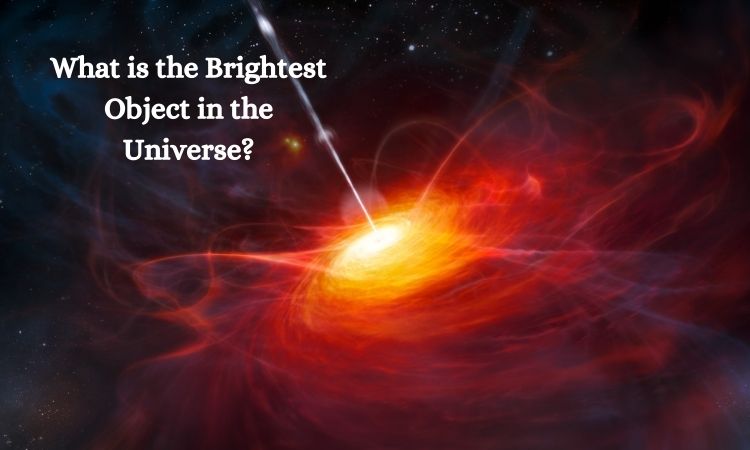
The stars are the primary source of light in the universe. Without stars, the universe would be cold and dark, and life as we know it could not exist. Some stars are thousands of times brighter than the sun, demonstrating the extreme brightness of stars. However, the stars themselves appear dim in comparison to some things. Quasars, which can be up to 100,000 times brighter than the entire Milky Way galaxy, are the brightest known objects in the universe.
A quasar is an active galactic nucleus (AGN) that is incredibly bright. It is sometimes referred to as a quasi-stellar object, or QSO. The supermassive black hole driving the emission from an AGN is surrounded by a gaseous accretion disc and has a mass of between millions and tens of billions of solar masses. By heating up due to friction, gas in the disc that is falling towards the black hole emits electromagnetic radiation. Quasars have an enormous quantity of luminous energy. The luminosities of the most powerful quasars are thousands of times brighter than those of galaxies like the Milky Way.
When quasars were first discovered in the 1950s, they were thought to be far-off stars. The exact nature of quasars was not fully understood until the mid-1990s Hubble Space Telescope launch. With smaller, Earth-based telescopes, quasars appear as a single object due to their extreme brightness. Quasars appear identical to ordinary stars from a distance. Quasars are technically called quasi-stellar objects because at first, scientists thought they were stars. Hubble was the first telescope able to capture quasars in high resolution, demonstrating that they were not stars at all but rather something completely else.
Any theory of quasar formation must explain why they are produced in the centers of enormous galaxies and why they are often restricted to the early cosmos. According to the current theory, supermassive black holes directly give rise to quasars. Every supermassive black in a galaxy has a large disk of matter called an accretion disk surrounding it. The supermassive black hole's accretion disk revolves around it as material slowly falls into the black hole over time.
The accretion disk will become extremely hot if enormous volumes of material enter a supermassive black hole too soon and cause an enormous amount of friction. When the energy level in the accretion disk reaches a certain level, it explodes forth as two enormous beams of light, creating a quasar.
It turns out that quasars are typically created in the initial phases of galaxy development. A galaxy absorbs a huge amount of material from its surroundings as it develops. The development of a quasar is the result of a process in which a significant portion of that material inevitably makes its way to the supermassive black hole at the center of a galaxy. A galaxy becomes much more active as it forms, and more matter is drawn into the supermassive black hole. The supermassive black hole will consume the majority of the extra material surrounding it as a galaxy becomes older, and the quasar will vanish. The Milky Way and all other galaxies have probably gone through this procedure in the past. A galaxy may also reactivate if it encounters a collision with another massive galaxy. There is a large influx of material that falls into the accretion disk surrounding a supermassive black hole when two or more galaxies collide. Galactic collisions can result in the creation of more compact quasars.
Final Word
Quasars, which are thought to be the brightest and most powerful objects in the universe, were originally discovered by astronomers 60 years ago, but their origin was unknown. Scientists now believe they have solved the mystery of what fires these cosmic objects.